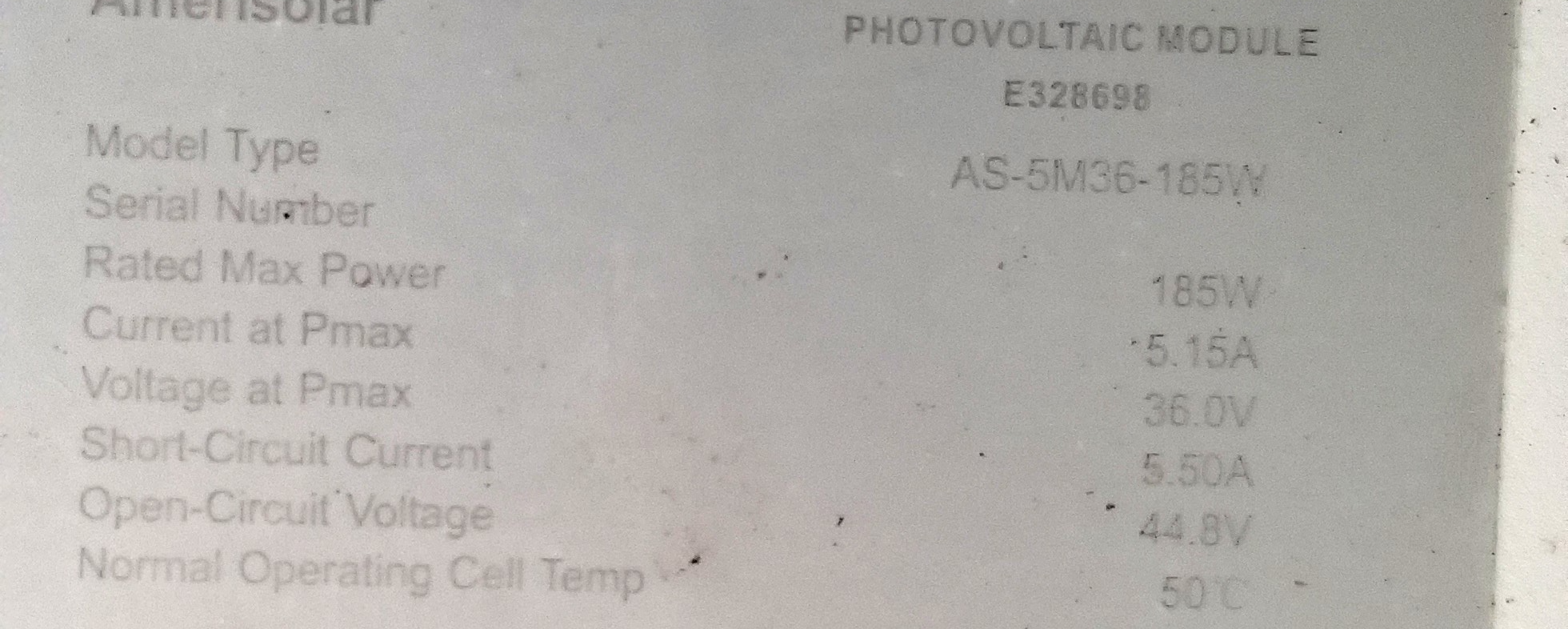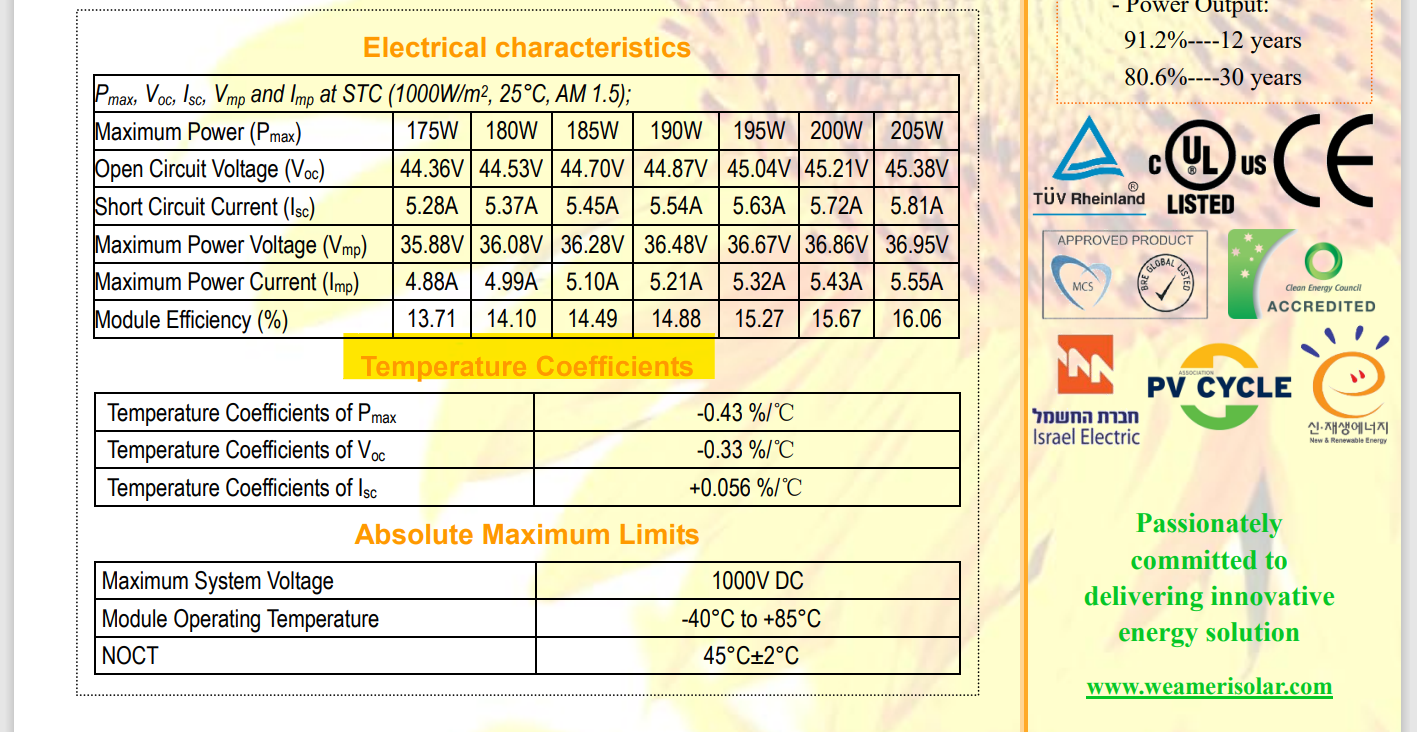I am trying to size my MPPT solar charger to my PV and I need a bit of clarification on the specs listed on the Victron solar charger I want to purchase (Smart Solar 150-60).
When the specs say "Nominal PV power at 36 V can handle 2580 watts", am I correct in understanding this means that if the voltage from my panels coming into the MPPT is 36v, then it can handle up to 2580 watts worth of panels?
I know that I also need to keep my volts and amps below the MPPT's rating. My system will be supplying 36v, 33 amp to the MPPT.
I plan on running 6 x 185W panels in parallel. Each panel is 36V and 5.15 Amp.
Thank you.



